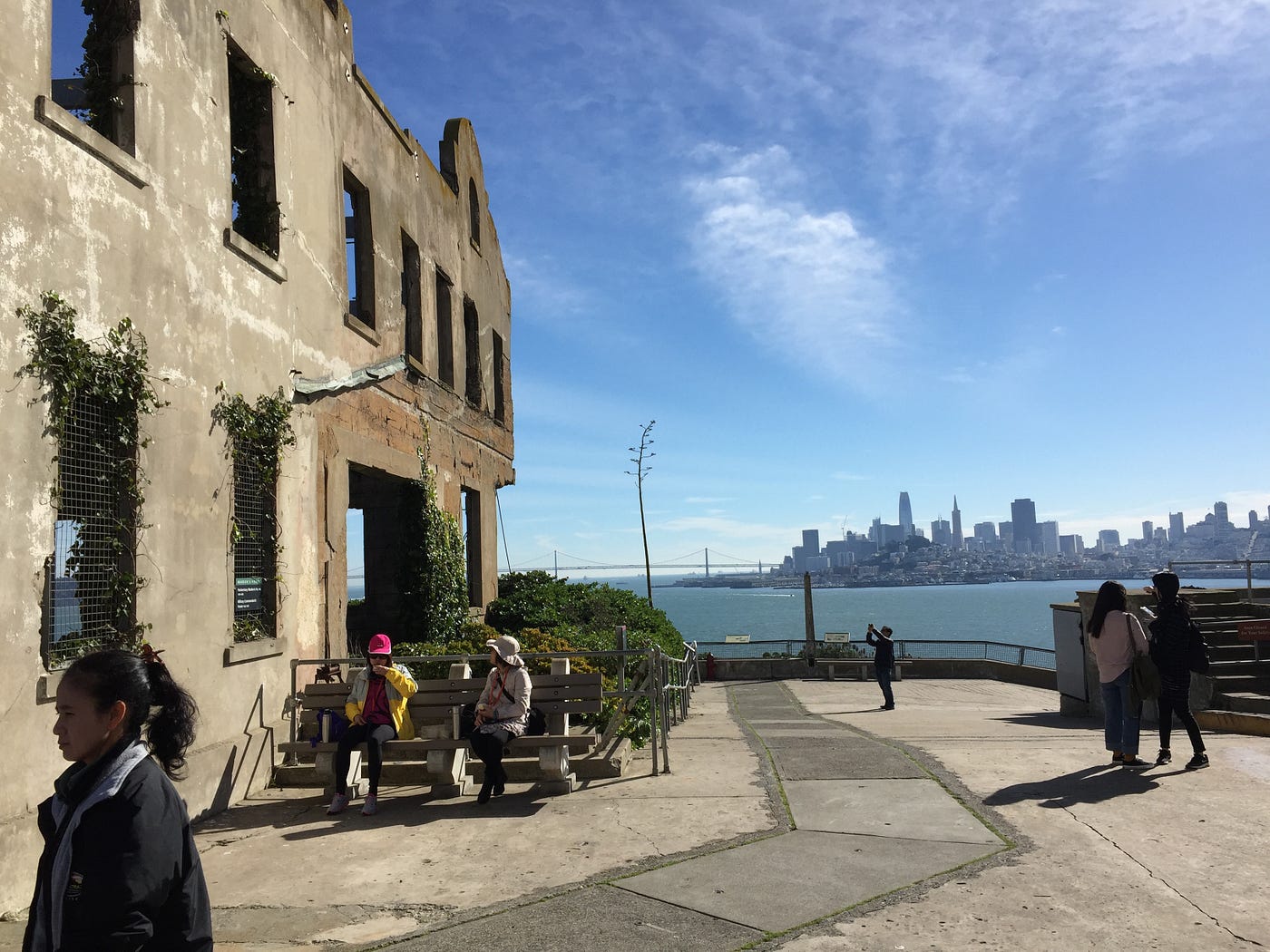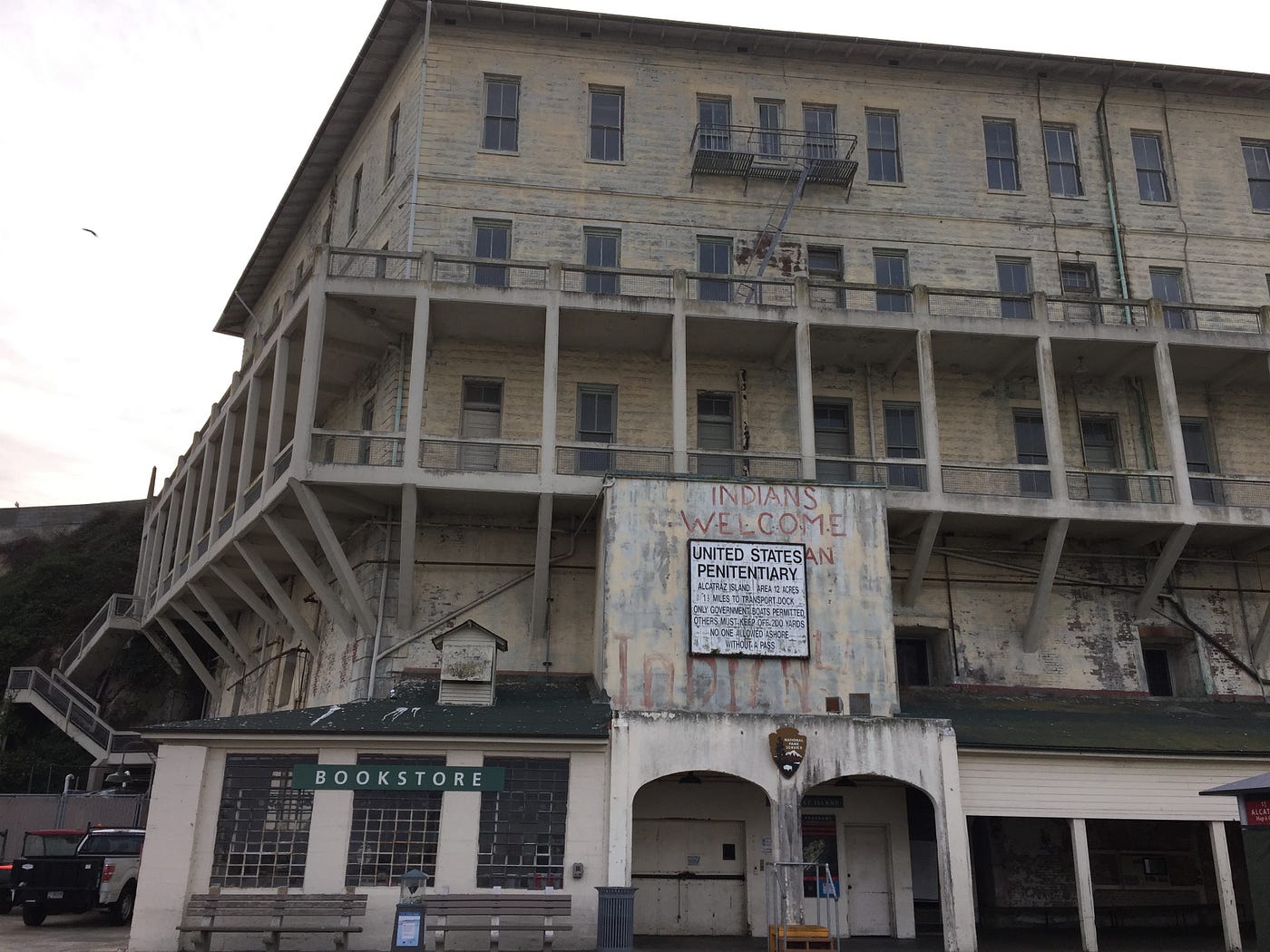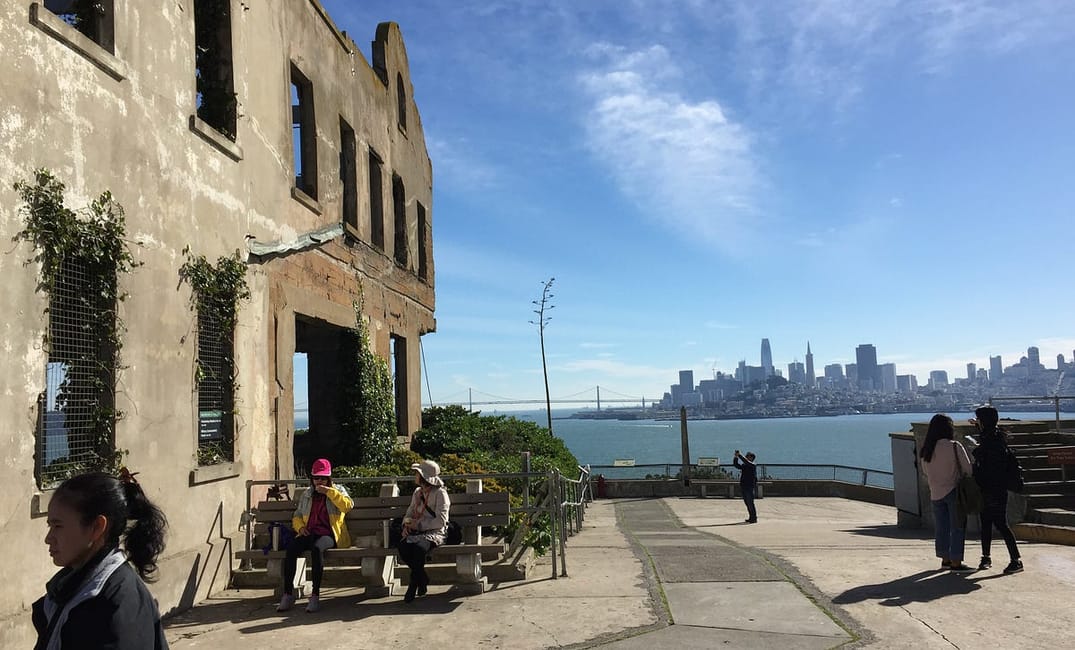
“The green button starts. The red button pauses. You go up the stairs, walk about 35 feet, and then start the player at the red sign,” I tell the groups of tourists piling off the ferry from San Francisco. As a staff member at the Golden Gate National Parks Conservancy, one of my jobs is to repeat those instructions for the Alcatraz cell-house audio tour dozens of times a day to visitors from around the world.
During the high season, as many as 5,000 people take the tour every day. It’s quiet as a library as guests with headphones pressed tightly to their ears wind in and around the cell house past the famous 1962 escape cells, Al Capone’s old room and eventually outside for stunning views of the bay. The Alcatraz audio tour is arguably among the best in the world, narrated by a former guard and incorporating the voices of other former prisoners and employees, many of whom are no longer alive, making the tour itself an historical artifact.

I washed up on the Rock after my career imploded as a radio news reporter and I needed a gig once my severance and unemployment ran out. Another radio escapee had began toiling on Alcatraz a few months earlier and mentioned to me that it was a pretty nice place to work. So I traded in my corporate office attire for a — literal — blue-collar shirt to report for duty on the Rock.
Over the past year here, I’ve learned that despite its dark history as a prison housing some of the country’s worst criminals, Alcatraz is beautiful. The ever-changing colors of the bay and the extensive gardens belie its reputation as just an ugly prison. I now think of Alcatraz as our castle in the bay, and like any visitor to a castle knows, you tend to see the battlements and the dungeons before taking a stroll in the lovely gardens.
Roughly one million people visit the island every year, which requires an extensive operation to keep the show moving.
Yet for many locals, including myself, before this job Alcatraz was associated with late-’90s movies (like The Rock) and the tacky T-shirt shops of Fisherman’s Wharf. Many of us who live in the Bay Area have never been, even though it’s at the top of the to-do list for tourists, so much so that tickets often sell out weeks in advance during the summer.

In fact, roughly one million people visit the island every year, which requires an extensive operation to keep the show moving. Those of us who work on the cell-house tour team are an eclectic bunch: underemployed broadcast journalists like myself, a former high school principal, numerous college students and several folks working out where to go next in their careers. Some have worked on the Rock for decades, and some are new to the island, but we all have our unique quirks and different ways of approaching the job.

Our most memorable character on the team has spectacular recall, memorizing information on Google Maps and Yelp to learn about restaurants in cities around the world, a kind of magic trick he uses to chat up guests. But like all magic tricks, it can be a bit wearing for those of us working nearby who hear it over and over again. Another coworker has made it a priority to memorize the tour instructions in most of the 11 languages offered on the audio tour.
I have been studying the tour itself to better understand the niche audio-tour business and maybe use those skills to forge a second career. I’ve longed dreamed about traveling to museums and cultural centers around the world to create new audio tours for visitors.
As a broadcast journalist, I learned a little bit about a lot of things over the years, but this job has given me the chance to learn a lot about just one place. The story of the unintended home of Al Capone, Machine Gun Kelly, the Birdman, mobster Whitey Bulger and other famous criminals is only a slice of the 22-acre rock we call Alcatraz.
The island is like a layer cake of history, full of hidden mysteries you won’t hear about on the tour.
The island is like a layer cake of history, full of hidden mysteries you won’t hear about on the tour. I find the lesser-known stories from its past most compelling, like the fact that after the prison closed in 1963, a Texas oil millionaire wanted to turn Alcatraz into a casino. Or that Native American activists occupied the island in 1969, demanding that the government cede the land. Or how after the occupation ended in 1971, the Nixon administration knocked down the homes of the former guards and their families to prevent future occupations.

It’s clear that while the Rock has changed over time, it’s always been a point of people’s fascination, each visitor hoping for something different. For some, it’s something to check off the SF bucket list — a thing you’re supposed to do, like riding a cable car. For others, it’s a chance to step onto a kind of movie set or see a ghost from all the horrors that once took place there. A select few elite tourists, known as “Alcatrazophiles” (those with encyclopedic knowledge about the island), are a rare breed—both a joy and a pain. It can be fun to answer their questions, but it can also be embarrassing when you can’t answer all of them.
Every day I hop onto the ferry to work, Alcatraz serves as a reminder to me that it was the history and beauty of the Bay Area that initially drew me here from a network-radio job back east. There is nothing finer than approaching our castle in the bay and seeing the bright lights of the city around me, reminding me that I live in one of the most beautiful cities on Earth.
Mel Baker is a broadcast journalist and part-time employee on Alcatraz. His views and commentary do not represent the National Park Service or the Golden Gate National Parks Conservancy.







